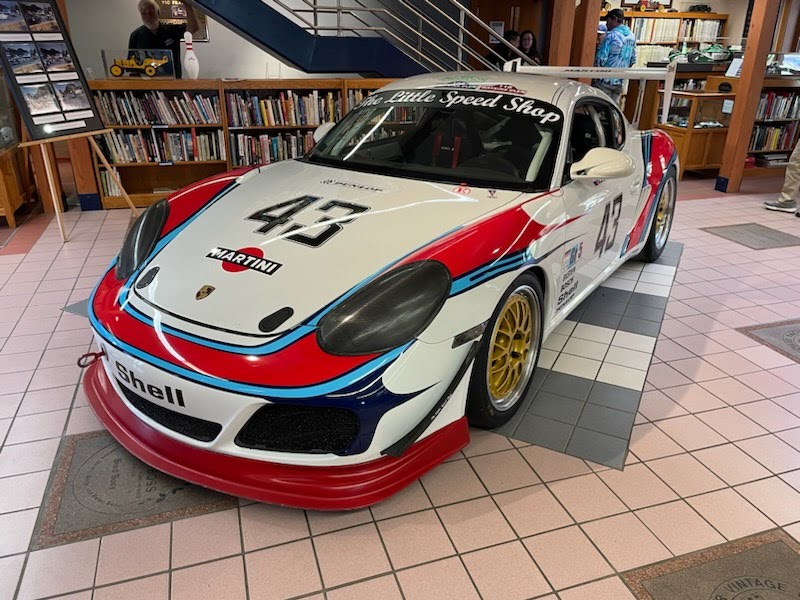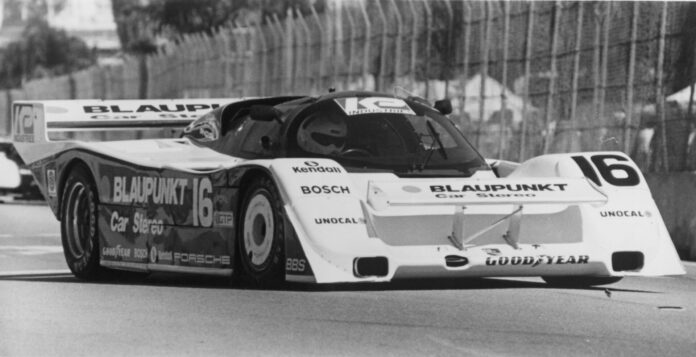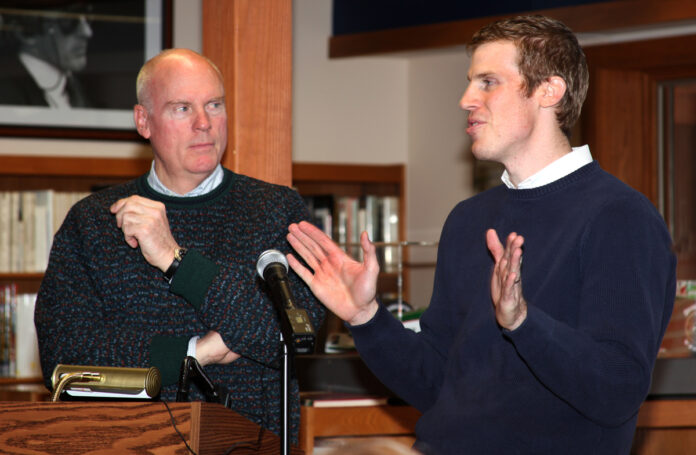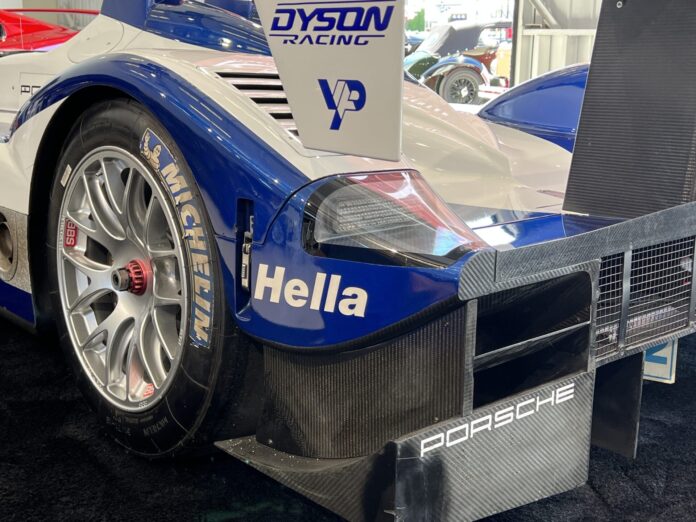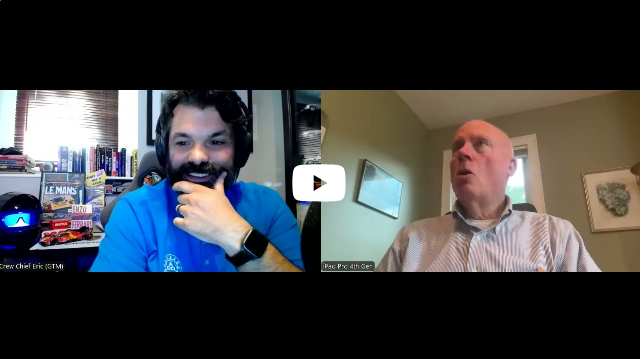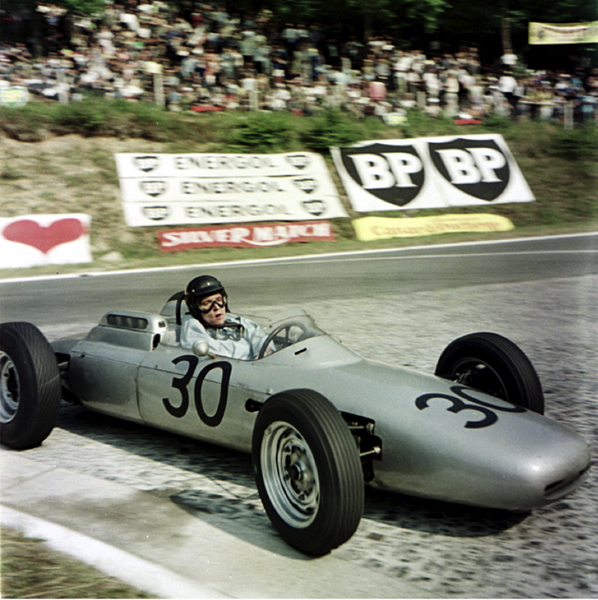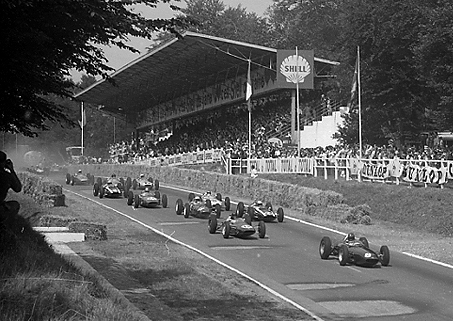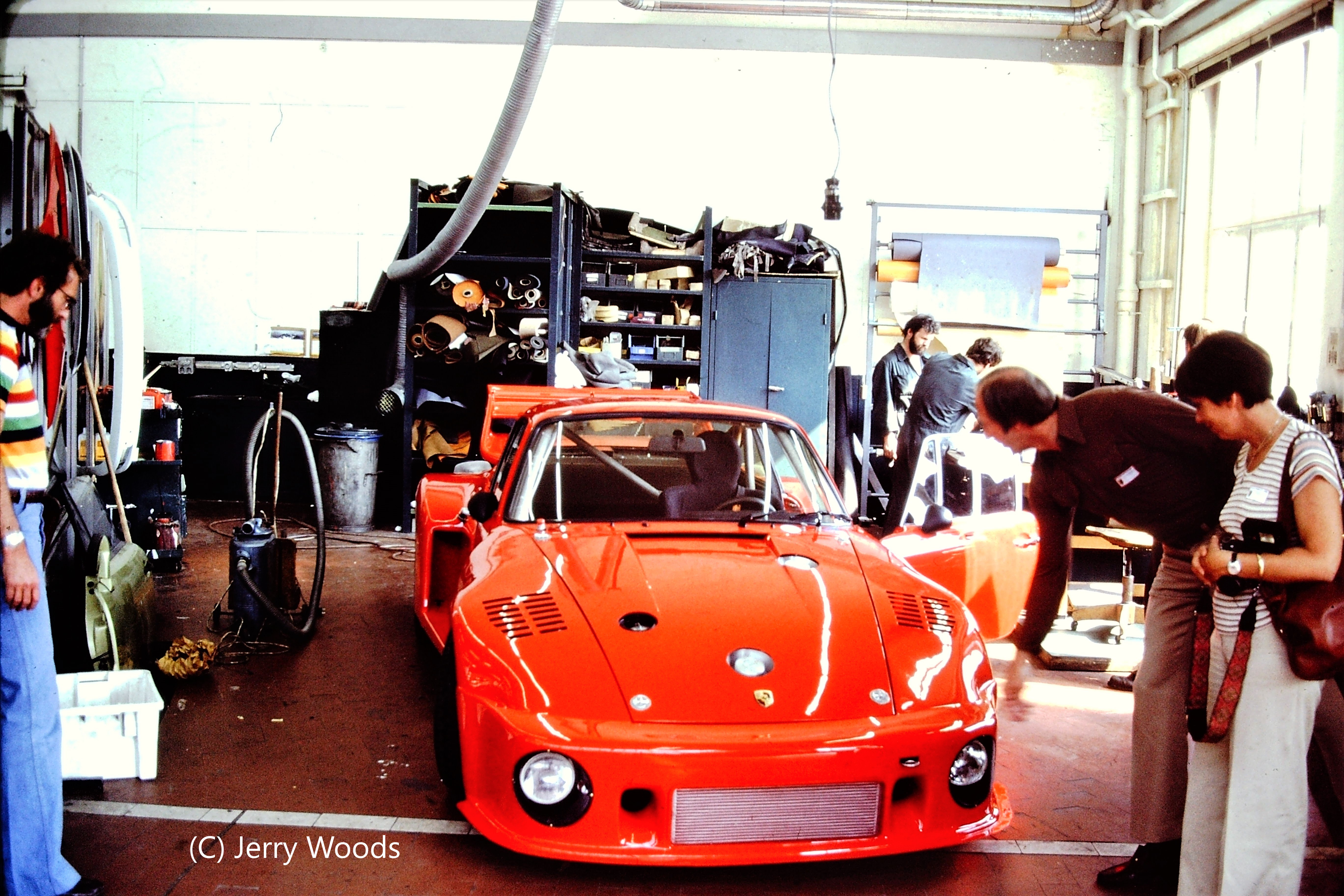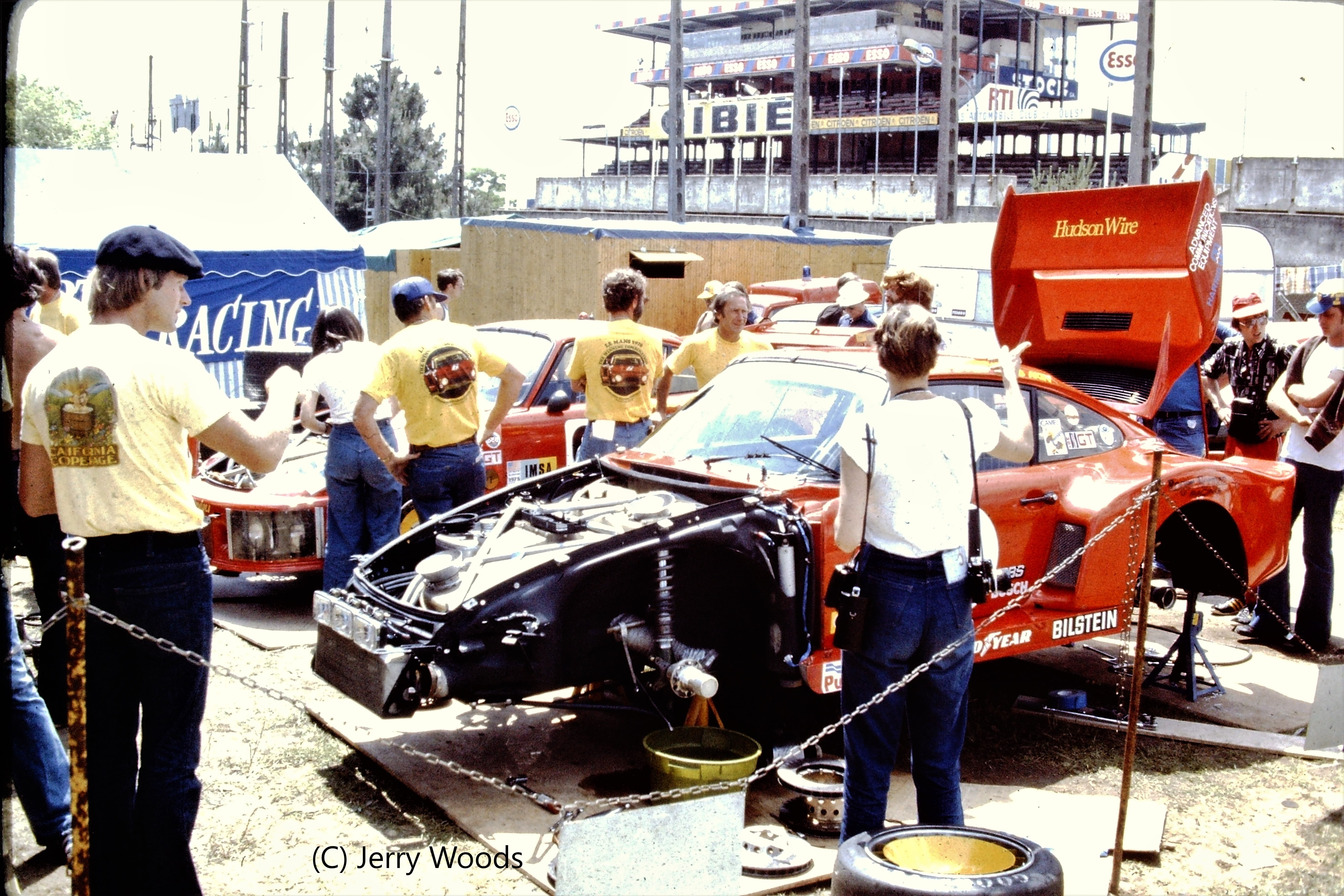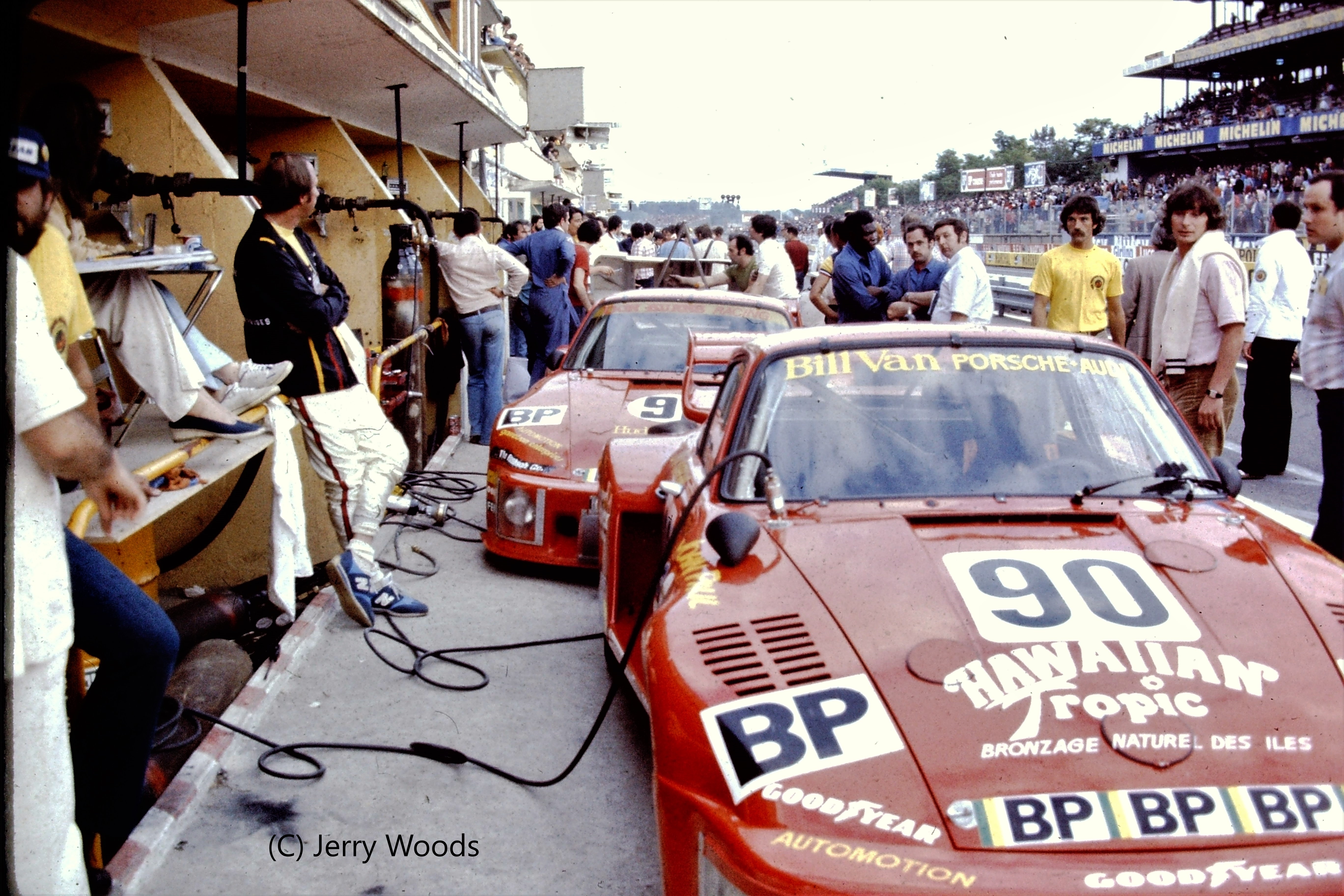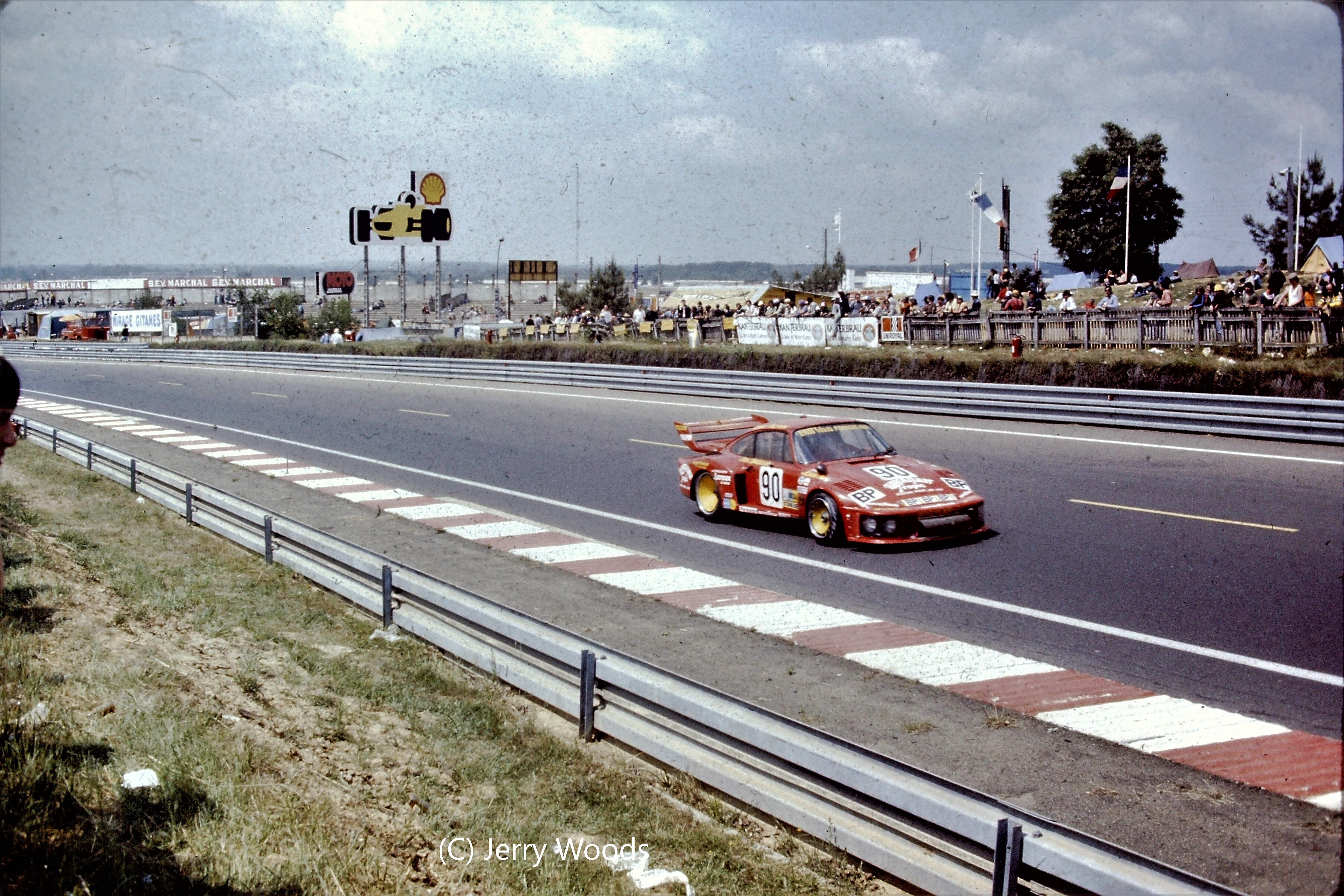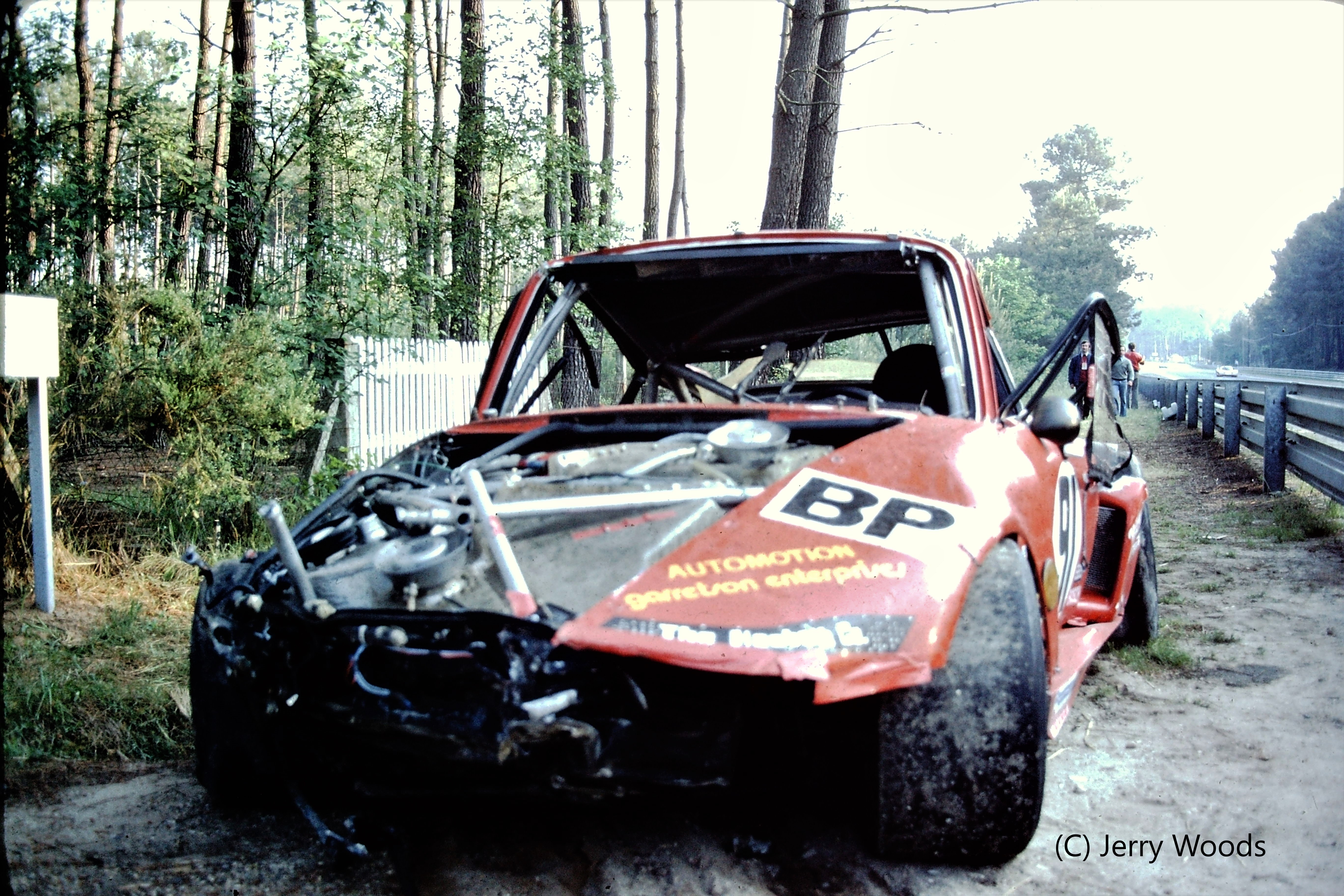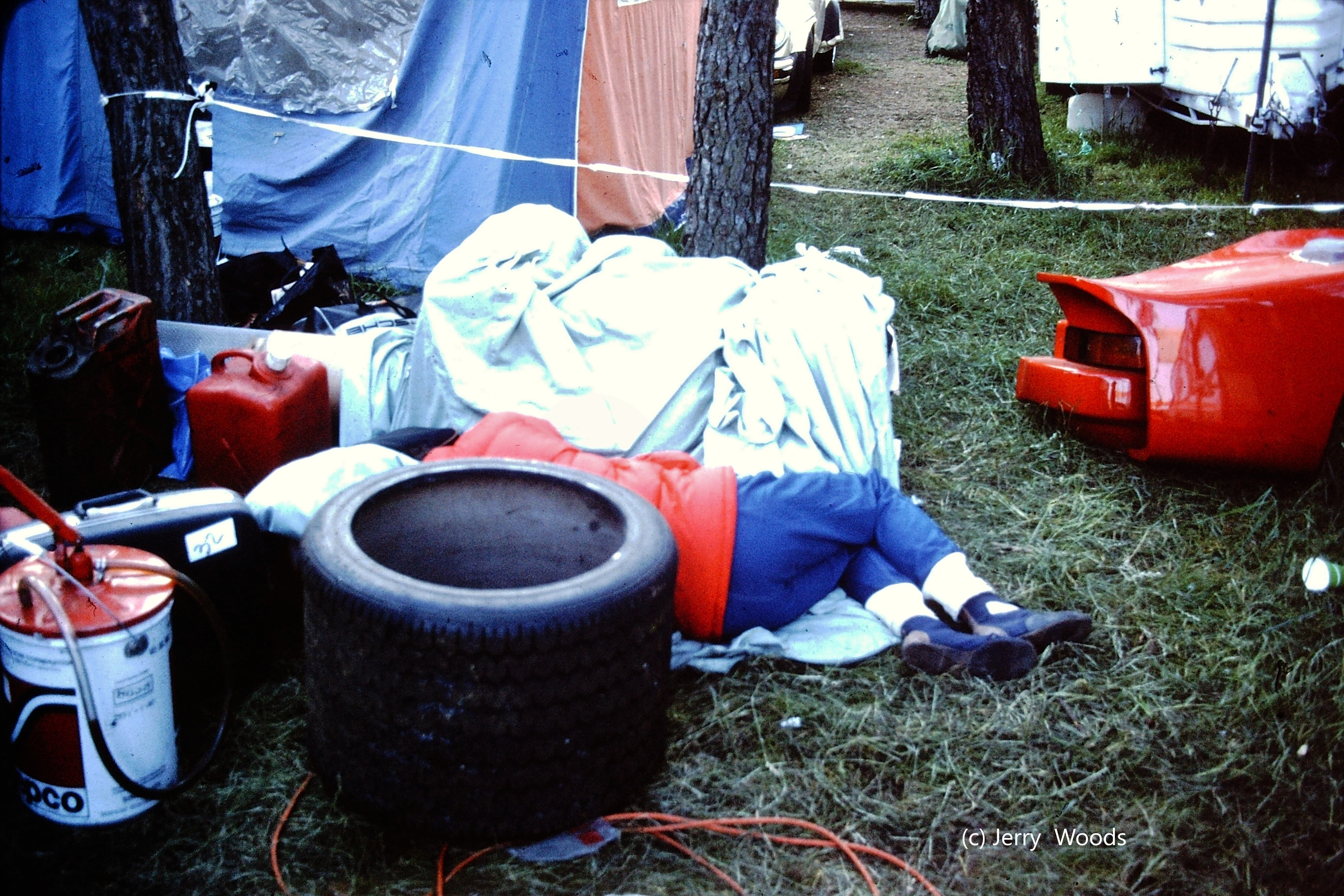Hurley Haywood, a name synonymous with endurance racing excellence. Over the course of 13 attempts at the legendary 24 Hours of Le Mans between 1977 and 1994, Hurley cemented his legacy as one of the greatest sports car drivers of all time. With three overall victories and five podium finishes, all behind the wheel of a Porsche, his story is one of relentless determination, precision, and an uncanny ability to push both man and machine to their limits.
We’ll break down his Le Mans career, the highs and lows, and what made Hurley Haywood a legend in the world of Le Mans and beyond.
This presentation is hosted by the ACO USA’s Evening With A Legend series, in partnership with the IMRRC, so we ask that you PLEASE REGISTER FOR THIS EVENT.
Give me the keys! On the grid, courtesy of the Little Speed Shop.
Rob Dyson, who started his racing career in 1974 at Watkins Glen International, In 1981 he won the Sports Car Club of America’s GT2 national championship, and began racing professionally in IMSA GTO and the SCCA Trans-Am in 1982.
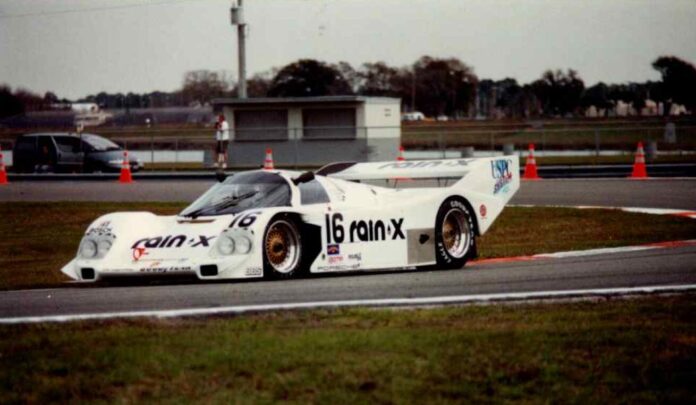 The following year, to support his professional racing efforts, he founded the Dyson Racing Team, which over the next few years grew to be one of America’s premier sports car racing teams.
The following year, to support his professional racing efforts, he founded the Dyson Racing Team, which over the next few years grew to be one of America’s premier sports car racing teams.
From their base in Poughkeepsie, New York over the course of nearly four decades the team won 19 championships, 72 race victories, started 72 times from the pole and achieved 224 podium finishes.
Among the team’s notable accomplishments is a pair of overall victories in America’s premier endurance race, the Rolex 24, at Daytona International Speedway. And In 1986 Rob found himself behind the wheel of a Porsche 956 at the famed Circuit de la Sarthe: Le Mans.
During his 21 seasons as a professional racing driver Dyson drove in 92 races, scoring four overall race wins (including the 1997 Rolex 24 at Daytona) and a total of 18 podium finishes. Dyson continued to compete episodically in professional racing through 2007 and today remains active driving his collection of vintage Indy cars in a variety of demonstration events.
He was named chairman of the board of directors of the Indianapolis Motor Speedway Museum in 2021 following a decade as a member of the board, he is guiding the institution through its $89 million transformational renovation as it charts its future path as the repository of the history and related artifacts of America’s oldest active and most storied racing facility. And he’s still involved in the Dyson Racing Team, supporting his son’s racing efforts, including Chris’ three attempts in ’04, ‘09 and 2014.
Rob’s Keynote Address
The 7th Annual Michael R. Argetsinger Symposium on International Motor Racing History was held at Watkins Glen International on Nov. 3rd and 4th, 2023. Rob Dyson, the Keynote for the event, presented “A Driver’s Reflections on Watkins Glen at 75.” An appreciative crowd gathered to listen and the IMRRC was extremely grateful that Mr. Dyson made the trip to Watkins Glen to join the conference.
There’s more to this story!
Be sure to check out the behind the scenes for this episode, filled with extras, bloopers, and other great moments not found in the final version.
All of our BEHIND THE SCENES (BTS) episodes are raw and unedited, and expressly shared with the permission and consent of our guests.
We hope you enjoyed this presentation and look forward to more Evening With A Legend throughout this season. Sign up for the next EWAL TODAY!
Evening With A Legend (EWAL)
Evening With A Legend is a series of presentations exclusive to Legends of the famous 24 Hours of Le Mans giving us an opportunity to bring a piece of Le Mans to you. By sharing stories and highlights of the big event, you get a chance to become part of the Legend of Le Mans with guests from different eras of over 100 years of racing.
ACO USA
To learn more about or to become a member of the ACO USA, look no further than www.lemans.org, Click on English in the upper right corner and then click on the ACO members tab for Club Offers. Once you become a Member you can follow all the action on the Facebook group ACOUSAMembersClub; and become part of the Legend with future Evening With A Legend meet ups.
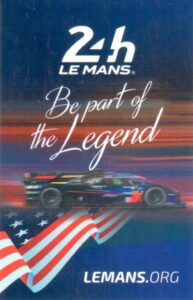 |
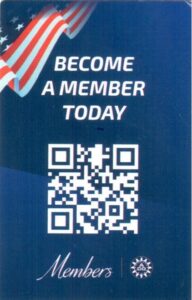 |
Other episodes you might enjoy
This episode is sponsored in part by: The International Motor Racing Research Center (IMRRC), The Society of Automotive Historians (SAH), The Watkins Glen Area Chamber of Commerce, and the Argetsinger Family – and was recorded in front of a live studio audience. And has been Edited, Remastered and Produced in partnership with the Motoring Podcast Network.
As part of an ACO USA membership you’re invited to join Evening With A Legend, a series of presentations exclusive to ACO USA Members where a Legend of the famous 24 Hours of LeMans race will share stories and highlights of the big event. However, this month the IMRRC in partnership with the ACO USA is proud to help share Rob Dyson’s Le Mans story with you! Rob is a long standing supporter of the IMRRC and get his start in racing at Watkins Glen International in the ’70s. And through the Motoring Podcast Network you have a chance to sit in during a live recording with Rob, ask questions, and hear his Le Mans journey first hand!
REGISTER FOR THIS EVENING WITH A LEGEND EVENT
Rob Dyson is a New York based businessman and retired professional racing driver with a long association with Watkins Glen International and the International Motor Racing Research Center. Following completion of his licensing school at Watkins Glen in 1974, Dyson began competing in amateur SCCA competition. In 1981 he won the Sports Car Club of America’s GT2 national championship.
Dyson began racing professionally in IMSA GTO and the SCCA Trans-Am Series in 1982. The following year, to support his professional racing efforts, Dyson founded the Dyson Racing Team, which over the next few years grew to be one of America’s premier sports car racing teams. From it base in Poughkeepsie, over the course of nearly four decades the team won 19 championships, 72 race victories, started 72 times from the pole and achieved 224 podium finishes. Among the team’s notable accomplishments is a pair of overall victories in America’s premier endurance race, the Rolex 24, at Daytona International Speedway. In 1986 he found himself behind the wheel of a Porsche 956 at the famed Circuit de la Sarthe: Le Mans.
The team fielded cars during the heyday of the IMSA Camel GT, winning its first time out with a Porsche 962 at Lime Rock Park. Under Dyson’s leadership the team went on to successfully field entries in Indy car, the World Sports Car Championship, the United States Road Racing Championship, the American Le Mans Series (where the team scored two championships), the Rolex Sports Car Series, and the Pirelli World Challenge, where the team scored Bentley’s first-ever North American race victory.
During his 21 seasons as a professional racing driver Dyson drove in 92 races, scoring four overall race wins (including the 1997 Rolex 24 at Daytona) and a total of 18 podium finishes. Dyson continued to compete episodically in professional racing through 2007 and today remains active driving his collection of vintage Indy cars in a variety of demonstration events. Dyson’s personal historic Indy car collection ranges from a 1913 Isotta Fraschini tipo IM to Johnny Rutherford’s 1978 Budweiser McLaren M24B, and includes the 1961 Kimberly Cooper Climax, the first successful rear-engine car to compete in the 500.
Named chairman of the board of directors of the Indianapolis Motor Speedway Museum in 2021 following a decade as a member of the board, Dyson is guiding the institution through its $89 million transformational renovation as it charts its future path as the repository of the history and related artifacts of America’s oldest active and most storied racing facility.
In 2011 Dyson donated to the IMRRC the historic archives of National Speed Sport News, America’s premier motorsports news publication since the late 1930s.
Dyson is the chairman and chief executive officer of Dyson-Kissner-Moran Corporation, a privately-owned international holding company.
REGISTER FOR THIS EVENING WITH A LEGEND EVENT
Membership into the Automobile Club de l’Ouest – the founder and organizer of the 24 Hours of Le Mans – is open to all! The Club hosts events in Le Mans and around the world, attracting fans who enjoy their shared passion for motoring and motor racing. Tired of sitting in the pits. Explore the many advantages of becoming an ACO Member today!
Watkins Glen DE – May 10-12, 2024
We still have spaces open for the DE coming up in only 3 weeks.
If you have not been to Watkins Glen, either to drive the world renowned racetrack, or to visit the town and wonderful region of Watkins, you are missing out on a high point of our DE year.
Give it some serious consideration.
We have slots available in all run groups and could use some more instructors.
Registration for all Potomac DE Events is available at Motorsportreg.com DE. Make sure you sign up for Potomac DE events first. Green and Blue drivers, remember, our DE events fill up fast….
If you have DE questions, please contact:
DE Chairs – Bob Mulligan/Susan Kimmitt
or
DE Registrars – David Evans/Henrik Ojikutu/Jocelyn Lasher
All PCA Potomac Drivers Education events are on motorsportreg.com.
Here is many Americans’ favorite Grand Prix driver Dan Gurney taking the Nouveau Monde hairpin at the bottom of the Rouen-Les Essarts public road circuit during the French Grand Prix on July 8, 1962, in the Porsche 801 flat-8 Grand Prix car. The Porsche was a rather new car and had recently undergone substantial suspension and bodywork revisions based on extensive testing at the Nürburgring. Gurney was not forecast to be particularly competitive – in fact, he was back on the third row of the grid – but with some attrition, he surprised everyone by taking an unexpected victory.
The week before the French race all the British teams, Lotus, Cooper, Lola and BRM, had been at the super-fast Reims circuit for the non-Championship Reims Grand Prix, the new name for the prewar Grand Prix de la Marne, joined by two privately entered Porsche 718s. Ferrari, although entered, as here at Rouen, did not show up due to metalworkers strikes in Italy.
To whet the attention of the spectators, race day began with two Formula Junior heats and even a bicycle race. But soon things got down to some real F1 racing. At the start, seen here, Graham Hill in his BRM 57 leapt out to small lead ahead of Jim Clark’s Lotus 25, Bruce McLaren’s Cooper T60 and new F1 driver John Surtees with the Lola 4-Climax. Gurney was back in sixth place but stayed in touch with the leaders. His teammate Joakim Bonnier had the second Porsche 801, but was not at Gurney’s level, the American having received the majority of the Porsche mechanics’ attention during practice.
Before long McLaren stopped at the pits, but continued a couple of laps in arrears while Brabham brought his Lotus in to retire with broken suspension. At half distance it was Graham Hill still out in front with Clark’s Lotus in second and now Gurney up to third. Clark set a new lap record, but the decided all was not well with his car and came into the pits which left Hill in the lead by some 30 seconds over Gurney while Surtees’ Lola was third but a lap down. Then, with 12 laps to go, Hill pulled off at Nouveau Monde with injection troubles which gave Gurney the lead which he carefully held to the finish. The tail-enders also found that it pays to keep running as Tony Maggs with his Lotus was second one lap down and Richie Ginther in the second works BRM was third, two laps behind.
Because of Ferrari’s absence, their World Champion Phil Hill was but a spectator at Rouen, busy taking photographs with his Leica.
Photos by Louis Klemantaski ©The Klemantaski Collection – http://www.klemcoll.com
Author: Martin Raffauf
All photos: Jerry Woods
Dick Barbour raced at the 24 Hours of Le Mans as an entrant for the first time in 1978, where he entered two Porsche 935’s in the special IMSA class at the classic French enduro. Barbour had started racing in IMSA in 1977 after having bought one of the original ten Porsche 934/5 models offered by the factory for IMSA racing that year. He ran some of the IMSA races with mixed success, but towards the end of the season, he and Bob Garretson signed an agreement that committed Garretson Enterprises to prepare Dick’s car(s) for the 1978 season.
Garretson Enterprises was an independent Porsche repair shop in Mountain View, California that had made a name for themselves in 1977 by preparing Walt Maas’ IMSA GTU championship-winning Porsche 914-6. The team entered eleven races that year and won eight of them, and finished second, third and fourth in the others, winning the championship over the factory Datsun 240Z of Sam Posey run by Bob Sharp. They had also prepared the winning car at the 1976 Pikes Peak hill-climb, a Porsche-powered buggy for Rick Mears.
Dick was looking to expand in 1978, so he ordered a new 935-78 (77A) for Daytona. His old 934/5 from 1977 would need some work and investment to update it to full 935 specifications. With Johnnie Rutherford and Manfred Schurti as co-drivers, he finished second overall at Daytona with the new car, after being delayed by a blown tire in the banking which lost a lot of time for repairs. For Sebring, two cars were entered, and although Dick’s main car faltered when a shock broke and punctured an oil line, the second car driven by Bob Garretson, Brian Redman and Charles Mendez (the race promoter), won the race. That car was immediately sold to John Paul Sr. after Sebring.
After Sebring, where I started with the team, we started preparing for two more US races, Talladega and Laguna Seca, then Le Mans. The second-place Daytona car (serial number 930 890 0033) ran at Talladega and finished third with Dick and Johnnie Rutherford driving. For Laguna Seca, we entered two cars, one for Dick, who finished sixth and one for Bob Bondurant (which was the updated 934/5) who ended up seventeenth. Then came the big push to get everything ready for Le Mans. In those days transportation for the car was usually done by boat, so a long lead time was required.
Although I was working with the team quite a bit by then, I was not going to the races (except for Laguna and Sears Point), as the traveling schedule had already been determined. I helped get everything prepared and loaded and then wished the team well. Steve “Yogi” Behr from New York (an IMSA racer from time to time) came and drove one of the trucks back to New York for us to get it to the ship, as there were no other people available to make the drive.
Dick had ordered a brand- new twin turbo 935 from the Porsche factory for the race. Gary Evans, the team manager, had gone over to Germany to order it earlier in the year (serial number 930 890 0024). Gary and Jerry Woods went to the factory to take delivery before the Le Mans race. It was then delivered to the track by Porsche with the rest of their cars. It would run as #90, and be driven by Dick, Brian Redman, and John Paul Sr. The second car, which we had prepared in California, was a Porsche 935 (serial number 930 890 0033). This 935 was a single turbo model and would be driven by Bob Garretson, Bob Akin, and Steve Earle.
Dick Barbour Racing picks up a brand-new Porsche 935 from the factory just prior to the 1978 24 Hours of Le Mans. Gary Evans at Left, Bob Garretson and Sharon Evans at right.
The majority of the team had arrived the weekend before and set up in the Le Mans paddock. Several of the team stopped on the way and watched the Spanish Grand Prix at Jarama. At the Madrid airport, they ran into none other than Bill France Sr. of NASCAR, who gave them directions to the circuit. Ron Trethan, Greg Elliff, Brian Carleton, and Alan Brooking watched Mario Andretti win the Spanish Grand Prix in a Lotus 79. Many years later, Greg Elliff would restore the very same Lotus 79 for Duncan Dayton. At the race, they ran into Bill Broderick (the hat swap guy in victory lane!) from Union Oil (NASCAR). After the race, at the airport, all the drivers had already arrived from the track via helicopter. They had a beer with Jody Scheckter while waiting for the plane to France. By the time they got to the team hotel in Pontvallain France, it was very late and the place was already shut down as everyone had gone to bed. They slept on the sidewalk in front of the hotel and were woken early by the street sweepers. I guess that’s what happens when you travel from Mountain View, California to Pontvallain France for the first time! Pontvallain was just not set up for “late arrivals.”
Dick Barbour Racing crew gets set up in the grass paddock at Le Mans in 1978. As newcomers, we did not get prime paddock space in 1978.
The Le Mans circuit back then was very different from today. The Mulsanne had no chicanes, and the pits were old, and quite decrepit. The signal pits were at the far end of the circuit, many miles away at the Mulsanne corner. Radios back then were problematic, and in any case, the American radios did not work too well in France and were technically illegal to use, as you were supposed to have a French license to use any radios. Communications to the signal pits were via old crank up phones on the wall in the pit boxes. Paddock and team working conditions, were basic at best. Much of the paddock was not even paved, and as “newcomers”, the team got a prime grass corner in the back. The hotel was a small one in the town of Pontvallain which was well to the south of Le Mans, about a one hour drive.
The car as delivered by Porsche, needed some work to become IMSA legal as the rules for FIA Group 5 and IMSA were slightly different. IMSA rules required windshield retaining tabs, rear window straps, and a driver’s window net. New front air dams that had been built in California were fitted. These had been built by Jeff Lateer, and contained two headlights per side, thereby alleviating the need for the night hood mounted extra lights (lessening drag on the Mulsanne). The delivered drilled brake rotors were removed and replaced with longer lasting solid rotors.
Both Dick Barbour cars sit in the pits at Le Mans prior to the start of the 24-Hour classic.
Both cars were entered in the IMSA class, along with a bunch of Ferrari 512BBs, a few RSRs, one BMW CSL, and Brad Frisselle’s Monza. There were Group 6 prototypes from Both Porsche (936) and from Renault, as well as Mirage. These would be the cars to beat for overall victory. There were also quite a few Group 5 Porsche 935s and Group 4 Porsche 934s as well as 2.0-liter sports cars. All the 935s ran the 3.0- liter engine, some twin turbo, some single, except for the 935-78 from the factory which ran a 3.2 engine with water cooled heads. All the Group 5 935s weighed less than the IMSA version, as we had to run at the IMSA minimum weights to run in the class.
Both our cars qualified without difficulty. Redman got the pole in the IMSA class with a 3:52.6, Dick did a 3:56.6, and John Paul Sr. a 4:02. Bob Garretson qualified the #91 at 4:05, Bob Akin at 4:09 and Steve Earle at 4:13. Rolf Stommelen set a blistering time in the 935-78 of 3:30.9 to start third overall behind Ickx in the 936-78 at 3:27.6, and Depallier in the Renault at 3:28.4. The battle for the IMSA class would come down to our two cars, and most likely the Ferraris of Charles Pozzi and NART. Dick, having finished second at Daytona, was in an advantageous position to win the Daytona-Le Mans trophy for 1978. This trophy was awarded to the driver/team who did the best in the two races combined. Since the Brumos (Peter Gregg) team, which won Daytona, was not running at Le Mans, Dick just had to finish well up and he would get that trophy. That was a secondary goal of winning the IMSA class.
The number 90 Porsche 935 at speed at Le Mans in 1978. The car was shared by Dick Barbour, Brian Redman, and John Paul, Sr. and would win the special IMSA class that year.
The race started well enough. The strategy was to drive conservatively, finish, and win the class. Starting in the early stages, the #90 led the class and ran like clockwork. The #91 had a few issues, including troubles changing brake pads and a crash by Steve Earle, which required new front fenders and air dam. Around 3:50 am Sunday, #91 had an issue with the exhaust system, and 14 minutes were lost, but the car was still running. At 4:55 am Sunday, Bob Garretson went off the road at the Mulsanne kink, vaulted end over end on the side of the track on driver’s left. He doesn’t really remember what happened, and although he was dazed, he walked away from the crash. About the only thing he recalled was that the door was so smashed he had to crawl out thru the windscreen area. The windshield was gone completely. The car was pretty much destroyed. Brian Redman stopped at the site in the #90 car, checked to see if Bob was ok, then pitted to give a report to the rest of the team. Several of the crew went out to the crash site once it became daylight, and found Bob’s glasses in the dirt by the car.
The number 91 Porsche 935 wasn’t so fortunate, having crashed at high speed on the Mulsanne straight in the middle of the night. Driver Bob Garretson escaped unhurt, although he had to crawl out the hole the windshield used to occupy. The car was almost completely a write-off.
By the time we got it back to the shop in California, about all that was salvageable were a few gauges from the dashboard, some of the engine parts, and some of the gearbox parts. Most of the suspension, bodywork, chassis, roll cage etc. was all trash.
The #90 car ran trouble-free, just making normal pit stops for fuel, tires and changing of brake pads. The only real issue occurred at one point when team manager Gary Evans went looking for Brian Redman to get him ready for the next pit stop. He was getting worried when he didn’t find him in any of the driver caravans, which were all full of sponsors and others who weren’t supposed to be in there. Eventually, he was found sleeping in the canvas tire slings in the truck – disaster averted.
Brian Redman catches a nap between stints. Everyone, even the drivers, had to grab sleep when and where you could find it.
Since John Paul Sr. was driving with us, he brought his main mechanic, Graham Everett along. He and Greg Elliff changed the brake pads and did it well. According to Le Mans records, not one stop for this car was longer than two minutes. Even the Porsche factory guys on the 936 next door to us were impressed, as the #90 car was changing brake pads quicker than they were. Most of the race we were in a battle with the Group 5 leader, which was the Kremer car of our IMSA buddies Jim Busby, Rick Knoop, and Chris Cord. In the end, we finished fifth overall and won the IMSA class, and they finished sixth overall and won the Group 5 class. The Porsche factory at Werks 1 – Zuffenhausen had certainly done an outstanding job building 930 890 0024. Not one issue, and a class winner, first time out. The drivers did an excellent job and avoided any on-track issues, and the pit work was exemplary.
Dick Barbour had accomplished both goals – winning the IMSA class and winning the Daytona-Le Mans trophy for 1978. After that experience, he was hooked and would return to Le Mans again in 1979. But that’s another story.
Reprinted with Permission from PorscheRoadandRace (www.PorscheRoadandRace.com)
Lee and Jeannette Apostale, of Hornell, N.Y., Win Porsche 911
WATKINS GLEN, N.Y. (Oct. 12, 2018) – Lee and Jeannette Apostale of Hornell, N.Y., were the winners of the 2003 Porsche 911 Carrera 4S raffled by the International Motor Racing Research Center.
“This is the Center’s 20th anniversary year. We’re very excited that we are able to celebrate our successes and award such a beautiful classic sports car,” said Kip Zeiter, IMRRC Coordinator of Visitor Services and Outreach.
“We sincerely thank everyone who purchased tickets and made this year’s raffle of the Porsche and other prizes a successful fundraiser,” Zeiter added. This year the Center sold 2,065 tickets and raised over $100,000. The winning ticket was drawn at the Center on Oct. 6 as part of the IMRRC’s “RacetoberFest” anniversary celebration.
The Apostales purchased the winning ticket at this year’s Grand Prix Festival in Watkins Glen, where the IMRRC has a booth annually. Jeannette looked across the street to where the Porsche was parked, saw that the drawing was on Oct. 6, and said, “I’m going to win that; that’s on my birthday.” While the Apostales don’t have any immediate plans to bring the Porsche back to Watkins Glen, Lee participates in the Grand Prix Festival every year and “the car will be back to Watkins eventually,” he said.
Two other prizes were awarded at the event. Second prize, a set of four tickets to any 2019 SVRA event in the United States and a $500 Visa Gift Card, was won by Marcus Steck, of Newfane, N.Y., who plans to use the race tickets at his home track, Watkins Glen International. Andrew Wensel, of Rochester, N.Y., took home the third prize, a 50-inch Samsung Flatscreen Television.
Car raffles have supported the IMRRC’s programming and operations throughout its history. An exciting array of cars has been raffled off over the years. Past raffles have featured both new models provided by the manufacturers or vintage cars donated by friends of the Center, including a 2017 MINI Cooper John Cooper Works, a 1982 Ferrari 308 GTSi, a 2013
Boss Mustang 302 and a 1967 E-type Jag Series 1.
The International Motor Research Racing Research Center is an archival library dedicated to the preservation and sharing of the history of motorsports, of all series and all venues, through its collections of books, periodicals, films, photographs, fine art and other materials. For more information about the Center’s work and its programs, visit www.racingarchives.org or call (607) 535-9044


